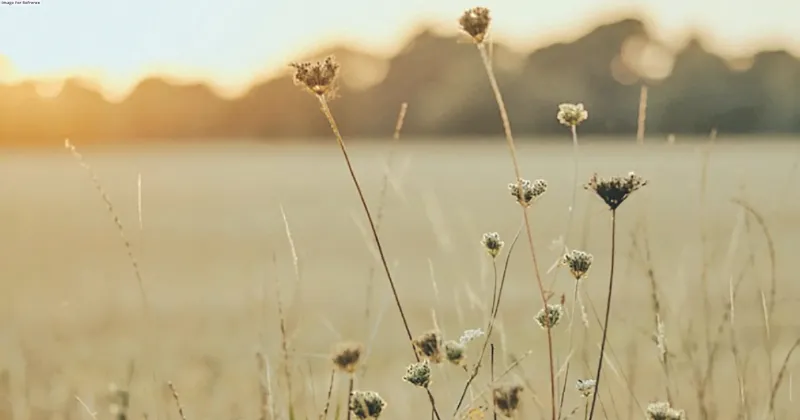Latest News
HOW TRADITIONAL EDUCATION HELPED 4 LOST KIDS SURVIVE 40 DAYS IN AMAZON JUNGLE

The discovery and rescue of four young Indigenous children, 40 days after the aircraft they were travelling in crashed in the remote Colombian rainforest, was hailed in the international press as a “miracle in the jungle”. But as an anthropologist who has spent more than a year living among the Andoque people in the region, conducting ethnographic fieldwork, I cannot simply label this as a miraculous event.
At least, not a miracle in the conventional sense of the word. Rather, the survival and discovery of these children can be attributed to the profound knowledge of the intricate forest and the adaptive skills passed down through generations by Indigenous people.
During the search for the children, I was in contact with Raquel Andoque, an elder maloquera (owner of a ceremonial longhouse), the sister of the children’s greatgrandmother. She repeatedly expressed her unwavering belief the children would be found alive, citing the autonomy, astuteness and physical resilience of children in the region.
Even before starting elementary school, children in this area accompany their parents and elder relatives in various activities such as gardening, fishing, navigating rivers, hunting and gathering honey and wild fruits. In this way the children acquire practical skills and knowledge, such as those demonstrated by Lesly, Soleiny, Tien and Cristin during their 40-day ordeal.
Indigenous children typically learn from an early age how to open paths through dense vegetation, how to tell edible from non-edible fruits. They know how to find potable water, build rain shelters and set animal traps. They can identify animal footprints and scents – and avoid predators such as jaguars and snakes lurking in the woods.
Amazonian children typically lack access to the sort of commercialised toys and games that children in the cities grow up with. So they become adept tree climbers and engage in play that teaches them about adult tools made from natural materials, such as oars or axes. This nurtures their understanding of physical activities and helps them learn which plants serve specific purposes.
Activities that most western children would be shielded from – handling, skinning and butchering game animals, for example – provide invaluable zoology lessons and arguably foster emotional resilience.
Survival skills
When they accompany their parents and relatives on excursions in the jungle, Indigenous children learn how to navigate a forest’s dense vegetation by following the location of the sun in the sky.
Since the large rivers in most parts of the Amazon flow in a direction opposite to that of the sun, people can orient themselves towards those main rivers.
The trail of footprints and objects left by the four children revealed their general progression towards the Apaporis River, where they may have hoped to be spotted.
The children would also have learned from their parents and elders about edible plans and flowers – where they can be found. And also the interrelationship between plants, so that where a certain tree is, you can find mushrooms, or small animals that can be trapped and eaten.
Stories, songs and myths
Knowledge embedded in mythic stories passed down by parents and grandparents is another invaluable resource for navigating the forest. These stories depict animals as fully sentient beings, engaging in seduction, mischief, providing sustenance, or even saving each other’s lives.
While these episodes may seem incomprehensible to non-Indigenous audiences, they actually encapsulate the intricate interrelations among the forest’s countless nonhuman inhabitants. Indigenous knowledge focuses on the interrelationships between humans, plants and animals and how they can come together to preserve the environment and prevent irreversible ecological harm.
This sophisticated knowledge has been developed over millennia during which Indigenous people not only adapted to their forest territories but actively shaped them. It is deeply ingrained knowledge that local indigenous people are taught from early childhood so that it becomes second nature to them.
It has become part of the culture of cultivating and harvesting crops, something infants and children are introduced to, as well as knowledge of all sort of different food sources and types of bush meat.
Looking after each other
One of the aspects of this “miraculous” story that people in the west have marvelled over is how, after the death of the children’s mother, the 13-year-old Lesly managed to take care of her younger siblings, including Cristin, who was only 11 months old at the time the aircraft went down.
But in Indigenous families, elder sisters are expected to act as surrogate mothers to their younger relatives from an early age. Iris Andoke Macuna, a distant relative of the family, told me:
The spiritual side
For 40 days and nights, while the four children were lost, elders and shamans performed rituals based on traditional beliefs that involve human relationships with entities known as dueños (owners) in Spanish and by various names in native languages (such as i’bo ño̰ e, meaning “persons of there” in Andoque).
These owners are believed to be the protective spirits of the plants and animals that live in the forests. Children are introduced to these powerful owners in name-giving ceremonies, which ensure that these spirits recognise and acknowledge relationship to the territory and their entitlement to prosper on it.
Eliran Arazi The writer is a PhD researcher in Anthropology, Hebrew University of Jerusalem and the School for Advanced Studies in the Social Sciences (Paris)
SOURCE: THE CONVERSATION





















